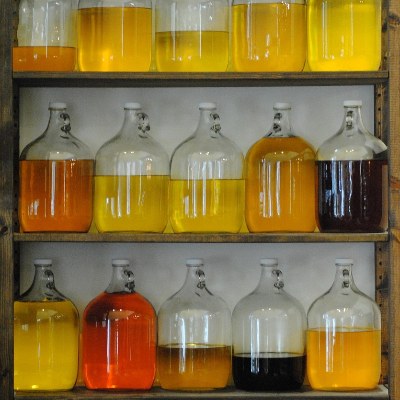Menu
-
-
F.A.Q
- How to identify genuine agarwood chip, natural or cultivated
- How to identify oil injection / absorption fake agarwood beads
- How to know if there are more than one oil in your oil
- How to make your wood bracelet or mala darker
- How to tell if an Agarwood bead sinks WITHOUT sinking it under water?
- How does back flow incense work and how do you burn it?
- Where to start if you don't know what agarwood is ?
- Why are you losing money if you buy seeds and plants?
- Which agarwood incense should I choose?
- Frequently Asked Questions
- Agarwood Related Articles
- Shipping
-
SHOP - Agarwood
-
SHOP - Other Fragrant Wood
-
SHOP - Incense Holder and Burner
-
- FREE Oud Oil guide
- Testimonials
- "Why did you buy this?"
- Contact us
- About Us
- +61430284329
- Login
-
English


When Ambegris meets Agarwood, amazing things happen.
December 02, 2023 8 min read
Ambergris
Once upon a time, the vast oceans of the world were a source of a mysterious and valuable substance called Ambergris, highly sought after for its unique properties. Among these oceans, one was particularly rich in ambergris—the waters surrounding the isolated Nicobar Islands, nestled between India and Southeast Asia (Dalby 2000). You can visit here for more information about the Island
The tale of Ambergris is woven with the adventures of seafarers and the intricacies of ancient trade. Sailors from the West, traversing these seas, often encountered the inhabitants of Larigabdlis, a people who spoke a language unknown to the merchants. These islanders, skilled in the art of silent bartering, would approach the ships in canoes carved from single tree trunks. They brought with them gifts of coconuts, sugar canes, bananas, and coconut wine, exchanging these for iron and sometimes a little Ambergris. Despite the language barrier, they communicated through gestures and signs, a dance of trade that transcended words.

The source of ambergris was as fascinating as its trade. This rare substance was a secretion from the intestines of sperm whales, particularly when they fed on cuttlefish. Expelled from the whale and washed ashore, it transformed from a grey-white, fishy-smelling mass to a fragrant, dark substance, highly aromatic and prized worldwide.

The Nicobar Islands, despite their wealth in ambergris, were not ideal for merchant ships due to limited hospitality. Thus, the mainland kingdoms bordering the Bay of Bengal became the new hubs for ambergris trade.
Dalby also mentioned in his book, in the kingdom of Qiranj, as described by the Persian sailor Sulaiman, life thrived amidst a modest harvest of pepper and abundant elephants. The kingdom, a unique blend of land and sea power, sat on a peninsula that jutted into the sea, a region rich in ambergris and intriguing in its cultural and economic dynamics.

Further south, Phuket Bay, known then as Junkceylon, beckoned English freebooters in the late 16th century. Their quest for ambergris led them to barter with the local king, continuing the legacy of this precious substance.
The allure of ambergris reached far and wide. From its use in the Roman Empire to medieval Europe and early Arab nations, it was revered as medicine and perfume. Its name, derived from the French 'ambre gris', meaning 'grey amber', distinguished it from the yellow amber found on Baltic shores, a fossilized resin from ancient pines. Despite their different origins, both shared similarities—found on beaches, used in food, jewellery, and perfume, and possessing a mild aroma.
The mysteries surrounding ambergris were as diverse as the cultures that valued it. While Westerners believed it to be whale dung or sperm, Arab and Persian lore offered more imaginative explanations, ranging from solidified sea spray to a sea bed fungus. The Chinese had their own enchanting beliefs, associating ambergris with the mythical dragons of the Western Sea, whose spittle, they thought, turned into this valuable substance.

Ambergris held a special place in various cultures, used in Arab cookery as an aromatic, in European sweets and perfumes, and even in Chinese tea and incense. Its ability to enhance other scents made it a key ingredient in perfume-making, treasured throughout history.
According to Dalby's book (page 67 and 68), when Ambergris is used as incense alongside frankincense, something extraordinary happens? As the mixture burns, a remarkable phenomenon occurs: a straight column of clear blue smoke ascends majestically into the air, defying the usual behavior of smoke by not dispersing.

This intriguing spectacle is so stable and dense that it's said one could almost slice through it with a pair of scissors. This fascinating characteristic of ambergris is believed to echo the legendary power of a dragon's breath - a concept well-known in ancient Chinese lore, where dragon's breath was thought to be not just a mythical vapor but a tangible force, so potent that it could form the very clouds holding aloft majestic temples and pagodas.

Ambergris remains a symbol of luxury and rarity, a relic of a bygone era where the sea's mysteries intertwined with human culture, trade, and imagination. The tales of ambergris, from the Nicobar Islands to the courts of Europe, remind us of a world where nature's gifts were as mystical as they were valuable, and where the oceans held secrets waiting to be discovered.
Aloeswood (Agarwood)
Marquetry, the delicate art of piecing together slivers of precious materials to create sumptuous designs, is a testament to human creativity and our enduring appreciation for natural beauty. The practice, which conjures images of skilled artisans bent over their work with patient precision, has roots that delve deep into the rich soils of history, emerging from the ancient mosaic traditions that adorned the halls of Egypt and Persia. It is an art that travelled the silk roads, evolving and taking on new forms as it reached the flourishing dynasties of China. Here, in the sophisticated hands of Chinese craftsmen during the Sui and Tang periods, marquetry was not just continued but elevated to magnificent heights.
Within this historical tapestry of marquetry, we find the Aloeswood Marquetry Box, a piece that embodies the essence of this ancient craft. It is an exquisite representation of the art form, in which the juxtaposition of Aloeswood against ebony and ivory creates a harmony of textures and patterns. This particular box, with its subtle yet captivating design, speaks volumes of the era's penchant for the exotic and the extraordinary, reflecting a cultural bridge between the known and the mysterious foreign lands of Asia. Click here to view The Sultra Box below is in Tokyo National Musem (unfortunately due to copyrighted image, I cannot show you here).
In the book of Dangerous Tastes: The Story of Spices, historian Andrew Dalby summarised Agarwood (Aloeswood) briefly in his book.
In an ancient world filled with the scents of exotic woods and spices, there was one aroma that stood out for its uniqueness and allure - the scent of aloeswood. This tale, steeped in history and mystery, spans continents and centuries, intertwining the lives of those who sought this precious wood.

The story begins with the tree Aquilaria Malaccensis (this species are in the Borneo region including Brunei, Malaysia and Indonesia), a bearer of the precious resinous wood known as aloeswood. Not as ancient as sandalwood but still deeply rooted in the annals of trade, aloeswood was a cherished commodity in early China and the ancient Mediterranean. Its journey through human knowledge is as aromatic as the wood itself.
In the Roman Empire, the first-century pharmacologist Dioscorides spoke of agalochon, a wood derived from Arabia and India. This aloeswood, known in the Greek and Hebrew languages and traced back to the south Indian form 'akilu', was celebrated in the classical Indian epics. From the eastern Indian hills to the works of Galen and Dioscorides, Aloeswood, also known as Indian Eagle-wood, made its mark.
The Chinese, ever astute in their botanical knowledge, had a unique understanding of Aloeswood. They believed that the tree, with its white flowers and orange-like leaves, needed to be wounded to yield its aromatic treasures. This practice led to various types of Aloeswood, each with its own distinctive qualities and uses.
The medieval era brought a special identification of Aloeswood with the Muslim kingdom of Champa in southern Vietnam. This connection was noted by both Chinese and Western sources, that Champa is rich with the scent of aloeswood.
While Chinese experts judged Aloeswood by its type, Arabs linked its quality to geographical origin. The densest Aloeswood, which sank in water, was considered the finest. This belief was shared across cultures, with both Chinese and Arab traders valuing this 'sinking' Aloeswood above all others.
Yet, as time passed, preferences shifted. Arab authors began to favor the Hindi variety, and the modern trade concurred. The 'Indian eagle-wood' was deemed superior to other varieties, though concerns arose in the 20th century about declining quality due to overharvesting.
People who love Hindi oud, usually love the animalic aroma. And because of this preferences, the Middle Easterner love this "aromatic stinky oud".
Aloeswood's uses were as varied as its types. In cosmetics, it is insulated against the cold. In the Roman Empire, Dioscorides detailed its applications as a mouthwash, body paste, and incense. Medieval Arabic writers added that high-quality Aloeswood, black and heavy, was ideal for perfumes, incense, and even as a flea repellent.
In China, Aloeswood was revered for its medicinal properties. Boiled in wine, it was believed to cure internal pains and purify the soul. As incense or ointment, it healed wounds, and courtesans used aloeswood water to perfume their garments.

Today, Aloeswood oil is a rare and costly ingredient in high-end perfumes. As the Aquilaria trees become increasingly scarce, this oil carries the legacy of a fragrance that has enchanted generations, a scent that has travelled through time and across cultures, leaving a trail of stories in its wake.
When Ambegris meets Aloeswood, a perfume is born
Ambergris is solid and to make perfume out of it, we tincture it. Tincturing ambergris makes it more practical and effective for use in perfumery, allowing perfumers to harness its unique scent and fixative properties in a more controlled and efficient manner.

Ambergris alone does not smell great (as well as its tincture). If you use Ambergris alone, it does not make anything special. It has marine notes that evoke the open ocean with earthy and woody undertones. It possesses a subtle animalic quality, enriched with sweet, tobacco-like or vanilla accents, and a warm, musk-like depth. The truth is when you smell it, you may not feel like what I feel. I will tell me what I describe was incorrect.
Similarly, the aroma of Aloeswood oil alone could be too strong for someone. It takes time to love it.
So the thought of creating a more pleasant, softer tones of these two ingredients come to my mind
How can we create a fragrance that embodies the mysterious depths of the ocean and the fragrance of Agarwood?
In my mind, the below image appear, the battle of the giants Sperm Whale and Cuttlefish guarding the precious Agarwood log

Inspired by this event, I asked Abraham to work on this project with me.
Determined, Abraham envisioned a scent that would weave together the deep ethereal woodiness of the forest with the celestial floral whispers of the gardens, all bound together by the enigmatic allure of Ambergris and a medley of spices. It was then that he recalled the classical amber-oudh accord, a time-honored combination in perfumery. Yet, Abraham yearned to break new ground, to craft something extraordinary and joyful, a fragrance that would be a first of its kind.
Introducing Oudbergris. Here, the ambergris accord brings a rich, profound depth, transforming the fragrance into an olfactory treasure. The inclusion of Agarwood oil, both in its Evergreen and Smooth Oud varieties, infuses an unforgettable character. Frangipani and spikenard add a beautiful herbal note, creating a tapestry of scents that are at once uplifting and grounding. Aromatic woody notes act as the final flourish, weaving everything into a rare, woody, sweet, and tangy scent that ignites curiosity and desire.
Oudbergris is a marvel of perfumery, crafted with a lavish 47% concentration of pure Oudh oil, a stark contrast to the modest amounts used in commercial perfumes. Complementing this is a 53% blend of aged Ambergris Accord, matured for over four years, serving as an exquisite fixative that harmonizes all the elements.
The journey of Oudbergris is as fascinating as its scent. The ambergris, having oxidized and decomposed on a beach for over 30 years, was then aged in oil for an additional four years, culminating in a fragrance profile of extraordinary vintage quality.

The genesis of Oudbergris was marked by a serendipitous conversation between Abraham and Trent. As they exchanged ideas, the concept of boosting the fragrance with oudh to enhance its profile and longevity emerged. In a moment of shared insight, they realized they were thinking along the same lines, embodying the adage that great minds do indeed think alike.
Thus, Oudbergris was born, a testament to innovation and tradition, a fragrance that is both uplifting and profound, capturing the essence of amber-oudh with a modern twist. It's a scent that invites you to embark on an olfactory journey, exploring the depths of the ocean and the whispers of the forest, all encapsulated in a single, mesmerizing bottle.
Leave a comment
Comments will be approved before showing up.
Also in News

What is Tasbih? The Deep Meaning of Subhan Allah and the Role of Prayer Beads
November 09, 2025 4 min read

